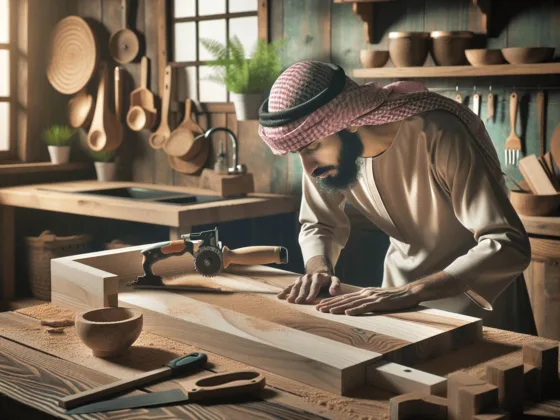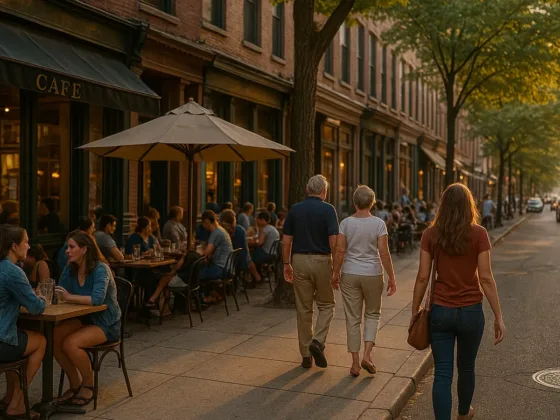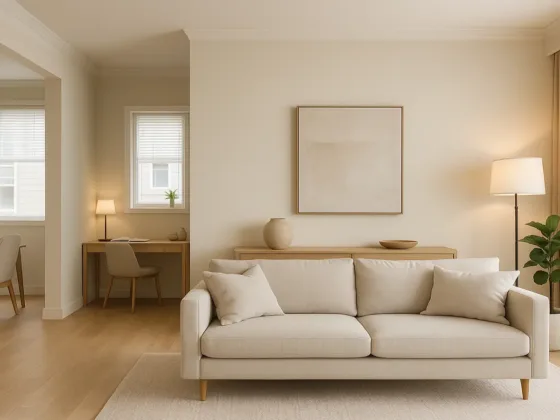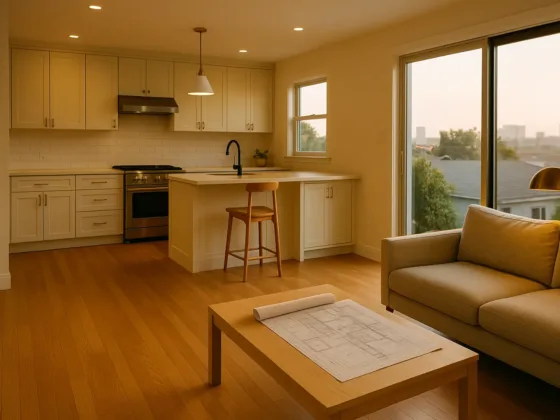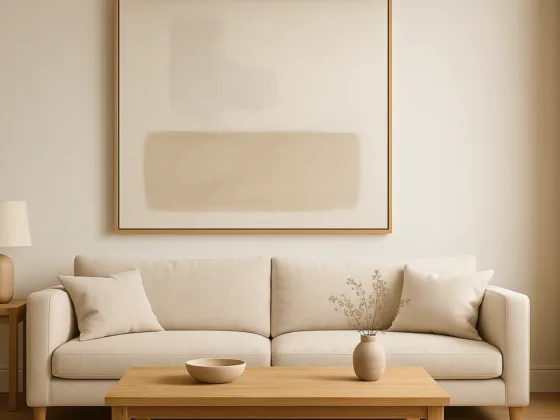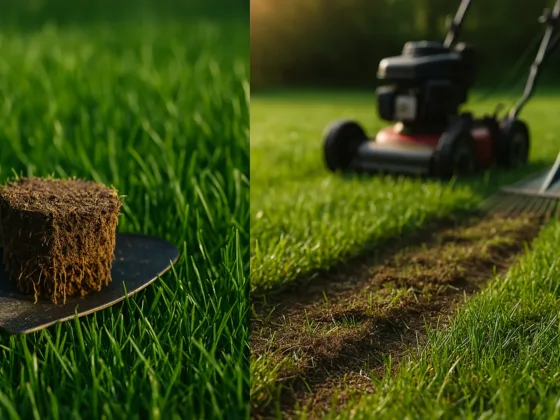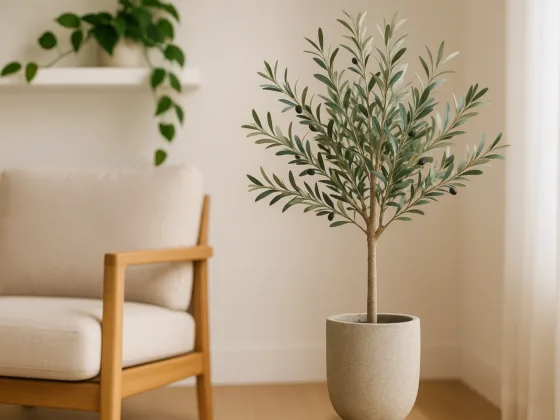Table of Contents Show
Introduction
Pergolas have become a beloved feature in modern home design, transforming ordinary backyards into inviting outdoor spaces. These structures not only add a touch of elegance but also provide practical benefits like shade and a defined area for relaxation or dining. The increasing popularity stems from their versatility and the aesthetic appeal they bring to any garden or patio.
Understanding the costs associated with building a pergola is crucial for homeowners looking to enhance their outdoor living areas. From Home Depot pergola installation cost to DIY options, knowing the financial commitment can help prevent unexpected expenses and ensure a smooth project.
When planning your budget, consider using the phrase “How much does it cost to build a pergola” as a guide. This keyword can help you find accurate estimates and valuable insights tailored to your specific needs.
Additionally, exploring different pergola design style ideas can inspire your project and potentially influence costs. For instance, if you’re considering a DIY approach, learning how to build a pergola attached to the house could be an advantageous option.
Moreover, incorporating elements such as waterproof outdoor curtains can add elegance and privacy to your pergola. To further enhance the beauty of your outdoor space, you might want to consider some flower pot designs that complement your pergola.
Lastly, staying updated with the latest trends can significantly elevate your outdoor space. Therefore, it’s beneficial to explore the best modern pergola designs and trends that could transform your backyard into a stunning retreat.
1. Understanding Pergolas

Defining Pergolas and Their Purpose
A pergola is a garden feature that forms a shaded walkway, passageway, or sitting area with vertical posts or pillars supporting cross beams and an open lattice. Often, they are adorned with climbing plants. Pergolas serve as both functional and aesthetic enhancements to outdoor spaces.
Types of Pergolas
Various types of pergolas cater to different needs and preferences:
- Attached Pergolas: These are connected to your home or another structure, providing seamless indoor-outdoor integration.
- Freestanding Pergolas: Independent structures that can be placed anywhere in your yard, offering flexibility in design and placement.
- Arched Pergolas: Feature curved beams for a more elegant look.
- Louvered Pergolas: Include adjustable slats that can control the amount of sunlight filtering through, making them ideal for transforming outdoor spaces with their versatility and functionality as highlighted in this article about louvered pergolas.
Benefits of Adding a Pergola
Adding a pergola to your outdoor space offers several advantages:
Shade and Comfort:
Provides relief from direct sunlight while allowing airflow, making outdoor areas more comfortable. For more insights on how pergolas provide shade, refer to this comprehensive guide on the shading benefits of pergolas.
Aesthetic Appeal:
Enhances the visual appeal of gardens and patios with their architectural beauty. A well-designed pergola can significantly add beauty to your outdoor space.
Versatility:
Can be customized with various materials such as wood, vinyl, or aluminum, each offering unique benefits:
- Wood: Offers a natural look but may require more maintenance.
- Vinyl: Low-maintenance and durable, available in various colors.
- Aluminum: Lightweight, rust-resistant, and modern-looking.
Pergolas not only increase the usability of outdoor spaces but also potentially boost property value by adding an attractive feature to the landscape. Additionally, they can be complemented with garden furniture to create a more inviting outdoor living area. This concept is further explored in the context of elevating outdoor living with pergolas and garden furniture.
2. Factors Influencing Pergola Costs
Size Considerations
When considering the cost of building a pergola, one of the primary factors influencing the price is its size. Pergolas come in various dimensions to suit different spaces and needs, and their costs can vary significantly based on these measurements.
You can explore more about the most popular dimensions and sizes for DIY pergolas to help determine what might work best for your outdoor space.
Common pergola sizes include:
- 10×10 ft: This size is suitable for a small patio or garden area. It provides enough space for a couple of chairs and a small table, making it ideal for intimate gatherings or a cozy outdoor nook.
- 12×12 ft: A bit more spacious, this size can accommodate a larger seating area and perhaps even a small dining set. It’s perfect for medium-sized backyards.
- 16×16 ft: For those with ample outdoor space, this size offers plenty of room for larger furniture arrangements and can serve as an excellent spot for entertaining guests.
Regarding the average cost per square foot, here’s a breakdown based on popular materials:
a. Wood:
- Cedar: $25 – $35 per square foot
- Pine: $15 – $25 per square foot
- Redwood: $30 – $40 per square foot
b. Vinyl:
$20 – $30 per square foot
c. Aluminum:
$20 – $35 per square foot
For example, constructing a cedar pergola measuring 10×10 feet (100 square feet) could range from $2,500 to $3,500. Meanwhile, a vinyl pergola of the same size might cost between $2,000 and $3,000.
Material Choices
When considering the cost to build a pergola, one of the most significant factors is the material you choose. Each material type has its own set of characteristics and pricing, which can greatly influence your project’s overall budget.
Wood Pergolas
Wood is a popular choice due to its natural aesthetic and versatility. Here are some common wood options:
- Cedar: Known for its durability and resistance to insects, cedar is a top choice for many homeowners. The average cost per square foot typically ranges from $25 to $35.
- Pine: A more affordable option, pine offers a rustic look but requires regular maintenance to prevent decay. Expect costs around $15 to $25 per square foot.
- Teak: This premium hardwood is highly durable and weather-resistant but comes with a higher price tag. Teak pergolas can cost between $50 to $70 per square foot.
- Redwood: Another durable option, redwood offers a rich color and natural resistance to pests. Prices average around $30 to $45 per square foot.
It’s worth noting that some wood types like redwood and cedar are also among the best choices if you’re looking for pergolas that can withstand high winds, as they are sturdy and resilient.
Vinyl Pergolas
Vinyl is an attractive choice for those seeking low maintenance and modern aesthetics. Vinyl pergolas usually come in pre-fabricated kits, making them easier to install.
- Cost: Vinyl pergolas generally range from $20 to $40 per square foot. Though they may lack the natural charm of wood, their durability and ease of care make them a popular alternative.
Metal Pergolas
For a sleek, contemporary look, metal pergolas are an excellent choice. They offer durability, strength, and minimal maintenance requirements. While they may not have the warmth and natural appeal of wood, metal pergolas can complement modern architectural styles.
- Cost: Metal pergolas typically range from $30 to $50 per square foot. The price may vary depending on the type of metal used, such as aluminum or steel. Additionally, custom designs and intricate patterns can increase the overall cost.
Fiberglass Pergolas
Fiberglass offers a lightweight yet sturdy option for pergolas. It is resistant to rot, insects, and mildew, making it a low-maintenance choice. Fiberglass pergolas also provide flexibility in terms of design options.
- Cost: Fiberglass pergolas can cost between $30 to $40 per square foot. While they may be pricier than some wood alternatives, their longevity and minimal upkeep make them a worthwhile investment.
Aluminum Pergolas
Aluminum offers a sleek, contemporary look and is incredibly durable. It’s resistant to rust and requires minimal upkeep.
- Cost: Aluminum pergolas typically range from $30 to $50 per square foot. They are an excellent option for homeowners looking for longevity without the hassle of frequent maintenance.
Ultimately, the choice of material depends on your budget, aesthetic preferences, and desired level of maintenance. Consider factors such as climate conditions and the overall style of your outdoor space before making a decision.
Comparing Material Costs
To give you an idea of how material choice affects the average cost of a pergola, let’s break it down:
- A 10×10 ft cedar pergola might cost between $2,500 and $3,500.
- The same size in pine could be between $1,500 and $2,500.
- Opting for teak could push this up to anywhere from $5,000 to $7,000.
- A 10×10 ft vinyl pergola might range from $2,000 to $4,000.
- An aluminum counterpart could be between $3,000 and $5,000.
Planning your budget involves weighing these material costs against your desired aesthetic and maintenance preferences. Understanding these factors helps in making an informed decision tailored to your needs.
3. Labor Costs Associated with Pergola Installation
When considering the expense of building a pergola, labor costs play a significant role. Labor can account for around 20% of the total cost, making it a crucial factor to include in your budget. Understanding these costs helps you make informed decisions and avoid unexpected expenses.
Factors Influencing Labor Rates
Labor rates for pergola installation can vary widely based on several factors:
- Location: Rates differ significantly from one region to another due to variations in the cost of living, availability of skilled labor, and local demand.
- Complexity: The complexity of your design impacts labor costs. Intricate designs with custom features require more time and expertise, thereby increasing the cost.
- Contractor Experience: Hiring experienced professionals generally comes at a higher price, but it often ensures quality workmanship.
- Seasonal Demand: Labor rates can fluctuate based on seasonal demand. For instance, spring and summer may see higher costs as contractors are busier.
DIY vs Professional Installation
Choosing between DIY kits and professional installation is another critical decision that affects both the installation labor cost and overall project expenses.
DIY Kits
Opting for a DIY approach has its advantages and disadvantages:
Pros:
- Cost Savings: You save on labor costs by doing the work yourself.
- Flexibility: You can work on your schedule without waiting for contractor availability.
- Satisfaction: Completing a project yourself can be highly rewarding.
Cons:
- Skill Level Required: Building a pergola requires carpentry skills. If you’re not confident in your abilities, mistakes could lead to additional costs.
- Time-Consuming: DIY projects can take longer than professional installations due to learning curves and limited availability of personal time.
Professional Installation
Hiring professionals offers different benefits and drawbacks:
Pros:
- Expertise: Professionals bring experience and expertise, ensuring high-quality results.
- Efficiency: Contractors typically complete projects faster due to their skill and resources.
- Warranty/Guarantee: Many contractors offer warranties or guarantees on their work, providing peace of mind.
Cons:
- Higher Costs: Professional installation generally increases the overall pergola installation cost.
- Scheduling Constraints: You may need to align with the contractor’s schedule, which can delay your project.
Impact on Overall Costs
Both options have distinct impacts on your budget:
DIY Approach
- Initial Cost Savings
- Potential for Increased Expenses Due to Mistakes
- Investment in Tools (if not already owned)
Professional Installation
- Higher Upfront Cost
- Reduced Risk of Errors
- Potential Long-Term Savings Through Quality Workmanship
By weighing these factors, you can better understand how much it costs to build a pergola tailored to your preferences and budget constraints. Whether you choose a DIY kit or hire professionals, each path has unique financial implications worth considering carefully.
However, it’s important to remember that beyond just the financial considerations, adding a pergola to your yard could significantly enhance its aesthetic appeal and functionality. In fact, there are numerous reasons why you should consider incorporating a pergola into
4. Additional Costs to Consider
When planning a pergola project, some hidden costs can catch homeowners off guard. It’s crucial to factor in these additional expenses to create a more accurate budget.
1. Anchors and Foundations:
- Anchors: Essential for stability, especially in windy areas. Prices vary based on size and material.
- Foundations: Depending on the ground condition, you might need a concrete base or footings. This can add to both material and labor costs.
2. Permits:
- Local regulations may require permits for new structures. Permit fees can range from $50 to several hundred dollars, depending on your location and the scope of the project.
Tools for DIY Approach
Opting for a DIY installation? Be prepared with the necessary tools, which might include:
- Power Drill: Essential for securing screws and bolts.
- Saw: For cutting materials to size.
- Level: Ensures your pergola is perfectly aligned.
- Measuring Tape: Precision is key in construction projects.
- Safety Gear: Gloves, safety glasses, and ear protection are non-negotiable.
These tools might already be in your arsenal if you’re an avid DIYer. If not, purchasing or renting them will add to your overall cost.
Seasonal Pricing Variations
Timing can significantly impact the cost of building a pergola. Seasonal trends often affect both material prices and labor availability.
1. Spring and Summer:
- High demand for outdoor projects typically peaks during these seasons. Expect higher prices for materials and longer wait times for professional installation.
2. Fall and Winter:
- These off-peak seasons might offer lower prices due to decreased demand. Contractors may have more availability and potentially offer discounts.
3. Sales Events:
- Keep an eye out for sales events like Black Friday or end-of-season sales at home improvement stores. These can be excellent opportunities to purchase materials at a discounted rate.
Understanding these extra factors helps in creating a comprehensive budget that minimizes surprises down the road. By considering all potential costs, including installation supplies like anchors, foundations, necessary job supplies, and seasonal pricing trends, you’ll set yourself up for a smoother pergola-building experience.
5. Lifespan and Maintenance Costs
Lifespan of a Pergola
Different materials offer varying lifespans for pergolas. Understanding the best materials to consider can greatly influence your decision:
- Wood: Cedar and redwood pergolas can last up to 15-20 years with proper maintenance, while pressure-treated pine may last around 10-15 years.
- Vinyl: Known for its durability, vinyl pergolas can last up to 20-30 years with minimal upkeep.
- Aluminum: These structures boast a lifespan of 20+ years, thanks to their resistance to rust and weather elements.
Maintenance Considerations
Understanding the maintenance needs associated with each material helps in planning long-term costs:
Wood:
- Regular sealing or staining every 2-3 years is necessary to protect against moisture, insects, and UV damage.
- Estimated Annual Maintenance Cost: $100-$200
Vinyl:
- Minimal maintenance is required; occasional cleaning with soap and water suffices.
- Estimated Annual Maintenance Cost: $20-$50
Aluminum:
- Virtually maintenance-free; periodic cleaning to remove dirt and debris is all that’s needed.
- Estimated Annual Maintenance Cost: $10-$30
When estimating “how much does it cost to build a pergola,” consider these lifespan and maintenance factors. Proper care ensures your outdoor haven remains beautiful and functional for years. Moreover, exploring different types of materials perfect for pergolas can provide additional insights into making an informed choice.
6. Average Cost Breakdown by Material
When considering the wood pergola cost, it’s essential to understand that materials play a significant role in shaping the overall expense. Let’s delve into the average costs for various materials commonly used in constructing pergolas.
Wood Pergolas
Wood pergolas are a popular choice due to their natural aesthetics and versatility. Here are some of the common wood types and their associated costs:
- Cedar: Known for its durability and resistance to insects, cedar is a favorite among homeowners. The cost averages around $25-$35 per square foot.
- Pine: A more budget-friendly option, pine is often treated to withstand outdoor conditions. Expect to pay about $10-$20 per square foot.
- Teak: This premium hardwood offers exceptional longevity and weather resistance, making it a high-end option at approximately $50-$60 per square foot.
- Redwood: Similar to cedar in terms of durability and insect resistance, redwood costs around $30-$40 per square foot.
Vinyl Pergolas
Vinyl is a low-maintenance material, offering a clean and modern look. It’s also resistant to rot and insects. The average cost for vinyl pergolas ranges from $20-$40 per square foot.
Aluminum Pergolas
Aluminum pergolas are lightweight, durable, and require minimal maintenance. They provide a sleek, contemporary appearance and typically cost between $15-$30 per square foot.
Composite Pergolas
Composite materials combine wood fibers with plastic to offer the best of both worlds—a natural appearance with enhanced durability. Composite pergolas usually fall in the range of $25-$45 per square foot.
Each material has its unique characteristics, influencing not only the initial installation cost but also long-term maintenance and lifespan. Choosing the right pergola material isn’t always easy, but understanding these breakdowns allows you to make informed decisions tailored to your budget and design aspirations while ensuring you get the best value for your investment.
Cost Calculator Example
To illustrate how these costs come together, let’s consider a hypothetical project:
- Dimensions: 12×12 feet
- Material Choice: Cedar
- Installation Method: Professional Installation
- Size Calculation: 12 feet x 12 feet = 144 square feet
- Material Cost: Cedar cost: $30 per square foot (average)
- Total Material Cost: 144 sq ft * $30 = $4,320
- Labor Costs: Assuming labor accounts for approximately 20% of total costs
- Labor Cost Estimate: 20% of $4,320 = $864
- Total Estimated Expenditure: Material Cost ($4,320) + Labor Cost ($864) = $5,184
Using this cost calculator for building a pergola provides a clear picture of what you might expect to spend based on chosen dimensions, materials, and installation preferences.
This example highlights how custom wood pergola pricing can vary significantly depending on multiple factors. By carefully considering each aspect—from material choices to labor options—you can develop a well-rounded understanding of your project’s potential costs.
Conclusion
Understanding how much it costs to make a pergola involves considering various factors, including personal preferences and local market conditions. Each element, from the type of material chosen to the size and complexity of the design, plays a crucial role in determining the final cost.
When estimating expenses, keep these key points in mind:
- Material Choice: Different materials like wood, vinyl, and aluminum have varying costs. For instance, cedar might be less expensive than teak but requires more maintenance.
- Size Considerations: A larger pergola naturally increases the overall expense due to more materials and potentially higher labor costs.
- Labor Costs: Professional installation can add significantly to the total bill but ensures quality and durability. On the other hand, a DIY approach might save money initially but could require more time and effort.
- Hidden Costs: Don’t forget about additional expenses such as permits, tools for DIY projects, and seasonal variations in pricing.
By taking these factors into account, you can create a well-rounded budget that aligns with your vision for your outdoor space. Whether you opt for a basic structure or a more elaborate setup, understanding how much it costs to build a pergola helps in making informed decisions that enhance both aesthetics and functionality.
FAQs (Frequently Asked Questions)
The cost to build a pergola can vary widely based on factors such as size, material choice, and labor expenses. On average, the costs can range from $2,000 to $5,000 or more, depending on your specific needs and preferences.
Several factors influence the cost of building a pergola, including its size (e.g., common dimensions like 10×10 ft or 16×16 ft), the materials used (such as wood, vinyl, or aluminum), and labor costs. It’s essential to plan your budget considering these aspects.
Adding a pergola can enhance your outdoor space by providing shade, improving aesthetics, and creating an inviting area for relaxation or entertainment. Different types of pergolas offer unique characteristics that can complement various home designs.
Choosing between DIY installation and hiring professionals depends on your skill level and budget. DIY kits can save money but may require time and effort, while professional installation ensures quality but adds to overall costs. Consider the pros and cons of each option before deciding.
When budgeting for a pergola project, consider hidden costs such as anchors/foundations, permits (if required), and necessary tools for DIY projects. Seasonal pricing variations may also affect your budget based on construction availability.
The lifespan of a pergola varies by material; for example, wood options like cedar may require more maintenance than synthetic materials like vinyl or aluminum. It’s important to consider both lifespan and ongoing maintenance needs when selecting materials for your pergola.


